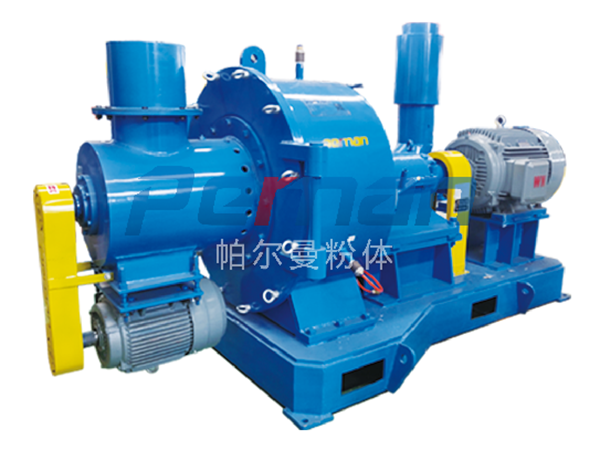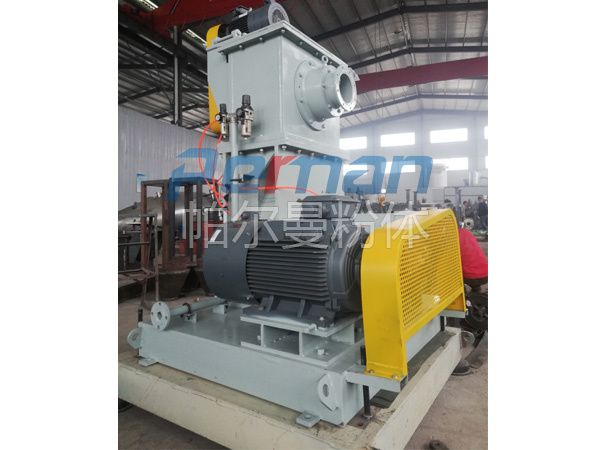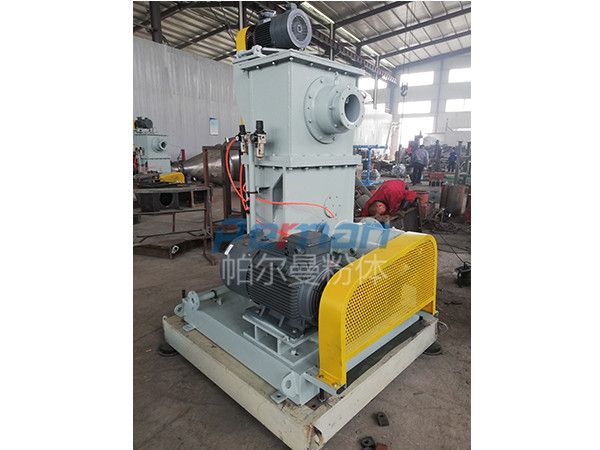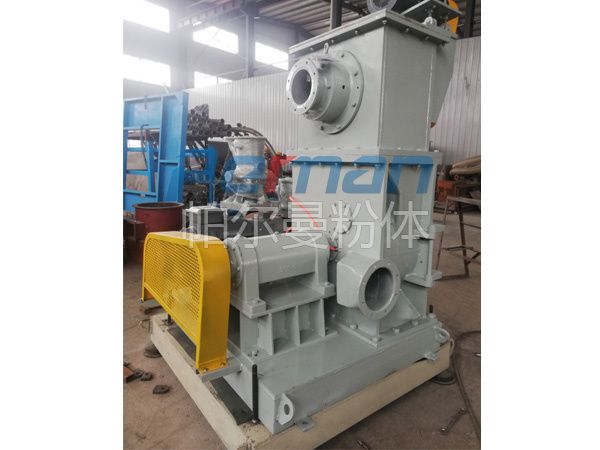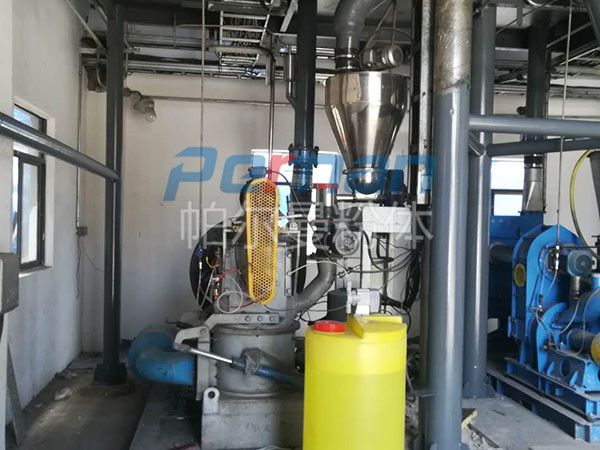CAM-Y solid waste baking soda crushing system
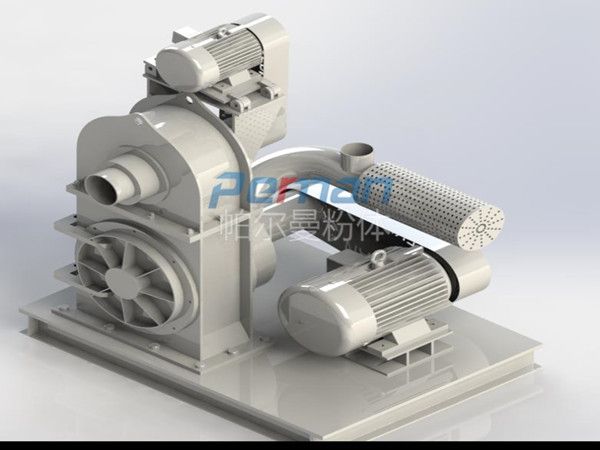
Air classification grinder
——Sodium bicarbonate grinding in flue gas deacidification process
Hazardous waste treatment Steel plant coke oven thermal power Municipal waste Sludge incineration Burning non-metallic ores Ceramic industry Glass manufacturing
With the increasingly strict requirements of environmental regulations, the dry deacidification principle of baking soda developed by Parman in combination with advanced processes in Europe and America has been increasingly applied. Dry adsorption using sodium bicarbonate as adsorbent to remove various pollutants contained in flue gas. Its purification effect can be compared with other known methods, such as spray adsorption with lime milk as adsorbent. Dry flue gas purification can not only be used in coal-fired power plants, hazardous waste treatment, municipal waste or alternative fuel incineration plants, but also widely used in industrial furnaces in industries such as glass, cement, and metallurgy. The use of dry flue gas purification can economically remove gases containing acidic substances, such as SO2, HCI, etc., and meet the national standard for flue gas emissions.
The flue gas contains a large amount of acidic gases. Through extensive data and experiments, it has been found that only when sodium bicarbonate (baking soda, NaHCO3) is small enough to react efficiently with the acidic components in the flue gas. It removes acidic pollutants from flue gas through chemical adsorption, and can also remove some inorganic and organic trace substances through physical adsorption. This process directly sprays sodium bicarbonate fine powder into high-temperature flue gas. Sodium bicarbonate decomposes at high temperatures to produce sodium carbonate Na2CO3, H2O, and CO2.
In general, the flue gas temperature is between 140 and 250 ° C. Due to the high activity of sodium bicarbonate adsorbents, a slight excess of sodium bicarbonate (with a stoichiometric factor between 1.1 and 1.3) is usually sufficient.
The particle requirements are related to the composition of the flue gas, and the required particle size for the removal of SO2 and HCl may vary. Due to transportation and storage reasons, sodium bicarbonate raw materials are usually coarse particles (with a d50 value of approximately 200 microns). To achieve high reaction activity, the adsorbent must have a large specific surface area. Therefore, before injecting into the flue gas pipeline, sodium bicarbonate must be ground to a certain fineness. For example, to remove SO2, the fineness of sodium bicarbonate must reach d90<20 µ m. And removing HCl only requires d90<35 µ m. If the system operation is correct, more than 95% of SO2 can be removed; The removal rate of HCl can even reach 99%. In order to maintain the required fineness of sodium bicarbonate in long-term operation, an air grinder is usually used for grinding, and the adsorbent is transported by gas transportation and directly introduced into the flue gas pipeline through multiple nozzles to ensure uniform dispersion in the pipeline. This equipment is designed to be simple and durable, and its investment and operating costs are lower compared to other flue gas purification methods.
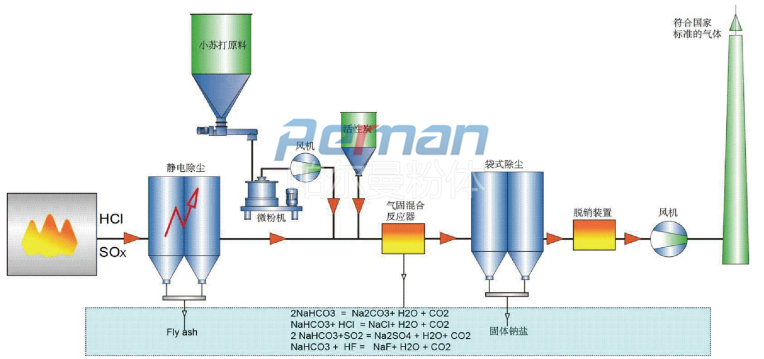
Product Introduction
A two-stage impact ultra-fine grinding machine, including a first stage grinding machine, with a grinding channel installed on the upper part of the grinding machine, a classifier installed on the upper part of the grinding channel, connected by a flange plate, a fan for sucking the grinding material into the classifier, and a grading channel connected to the grinding channel at the lower part of the classifier. A secondary grinder with a lining plate added at the bottom and a grinding disc added inside. An independent doorway can be set up on one side for easy inspection. Place the secondary grinder under the classifier, and the materials that have been ground in the first stage will enter the secondary grinder with the airflow. After being impacted by the secondary grinding hammer, the materials will enter the classifier for sorting. The materials with qualified fineness will pass through the grading wheel and enter the collection system. Those that do not meet the requirements will return to the secondary grinding area for further grinding. To prevent the temperature increase of the cavity after secondary grinding, water circulation can be added to the outer wall of the cavity without damaging the material properties. After adding a secondary grinder, the production capacity and fineness of different materials can be increased by 30-60% compared to traditional mills, greatly reducing energy consumption. By repeating this process, the material is crushed more finely without any storage issues, thus improving the utilization rate of the material.
Product advantages
The two-stage impact ultra-fine grinding machine is a new type of ultra-fine grinding machine developed by Weifang Parman Powder Equipment Co., Ltd. on the basis of traditional grinding machines. The materials in the traditional grinding machine are quantitatively fed into the grinding machine, and collide with the gear ring through high-speed rotating grinding blocks. After grinding, they enter the grading area with the airflow. Some materials cannot return to the grinding area for secondary grinding, while others cannot obtain finer particle sizes even if they return to the grinding area due to limited primary grinding force. Some require regular slag discharge because they cannot be ground. After traditional grinding machines crush and classify materials, coarse materials cannot be returned to the grinding system for further secondary grinding. Even those that can return to the grinding area cannot obtain finer particle size requirements due to the weak grinding force in the grinding area. Only wet grinding or air flow crusher grinding can be considered, which has high energy consumption and extremely low grinding efficiency, greatly increasing production costs. Our company's two-stage impact ultra-fine grinding machine, with the addition of a two-stage grinding machine, can increase production capacity and fineness by 30-60% compared to traditional mills for different materials, greatly reducing energy consumption. By repeating this process, the material is crushed more finely without any storage issues, thus improving the utilization rate of the material.


